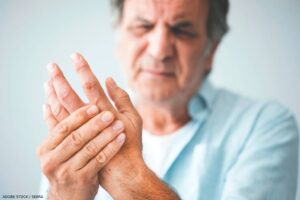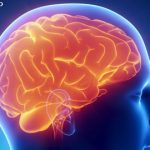 A recent longitudinal study of hand pain in osteoarthritis (OA) indicates a variable course, with some patients showing pain stability or even improvement over time.1 As researchers learn more about the biopsychosocial factors that influence pain course, the data may help shape more targeted interventions in specific patient subsets.
A recent longitudinal study of hand pain in osteoarthritis (OA) indicates a variable course, with some patients showing pain stability or even improvement over time.1 As researchers learn more about the biopsychosocial factors that influence pain course, the data may help shape more targeted interventions in specific patient subsets.
Multifactorial Nature of Hand OA
Multiple processes are thought to underlie pain in chronic hand OA, which may be present in patients to differing degrees. Traditional therapeutics target nociceptive pain in the joint, pain derived directly from the stimulation of pain receptors. For a condition such as hand OA, nociceptive pain may have both inflammatory and more mechanical components, and this is where much previous research has focused.1,2
Other causes may also play a role in pain, and a patient’s ultimate pain course. Sensitization of nerves can contribute to nociplastic-type pain, and actual nerve damage may lead to neuropathic pain in some patients. Incomplete response to standard therapies, such as non-steroidal anti-inflammatory drugs (NSAIDs), may partly derive from non-nociceptive causes such as these.1,2
Patients’ emotional and mental states can also powerfully influence the perception of pain, both chronic pain generally and in hand OA specifically. Previous studies have demonstrated that differences in patients’ sociocultural environments, coping styles and self-perception, illness perception and expectations, as well as levels of anxiety and depression, can all influence the subjective experience of pain in hand OA.3-5
For example, a recent study out of Norway demonstrated that patients with hand OA that was scored the least severe radiographically but who have higher burdens of psychosocial factors experienced more pain than patients with worse radiographic findings.6 Other studies have often found discrepancies between pain and radiographic joint findings, although these better correlate when analyzed at the individual joint level.7
One of the authors of the recent longitudinal pain course study in hand OA is Coen van der Meulen, MD, a current PhD student at Leiden University Medical Center, The Netherlands. He notes that the pain field has been moving from a purely nociceptive, biological model of pain toward a broader model that also incorporates other factors, including centrally mediated pain mechanisms, social factors and psychological factors.8
Study Design & Selected Outcomes
Some patients and clinicians conceptualize hand pain from OA as inevitably worsening over time. Some previous work indicated that, analyzed as a group, pain levels tend to stay relatively stable over long periods, although individuals’ pain may vary greatly from day to day.1 This includes a recent report by Dr. van der Meulen and colleagues utilizing data from HOSTAS (Hand OSTeoArthritis in Secondary care), an observational cohort of patients with a clinical diagnosis of hand OA from the Leiden University Medical Center rheumatology outpatient clinic.9
